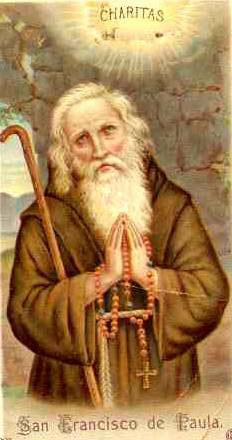Andreas Vesalius
FREE Catholic Classes
(WESALIUS.)
The reorganizer of the study of anatomy ; b. at Brussels, 31 Dec., 1514; d. in a Greek city on his journey home from Jerusalem in 1564. He was descended from a German family of physicians called Witing (Wytinck), which came from Wesel on the Rhine, and was the son of Andreas Vesalius, court-apothecary to the Emperor Charles V. As a boy he showed great interest in the dissection of animals. After pursuing his early studies at Louvain, he went about 1533 to the University of Paris, where Johannes Quinterus of Andernach and Jacobus Sylvius taught medicine. At the university Vesalius gave his attention largely to anatomy, especially that of the bones which he found in cemeteries and at the place of execution. He dissected entire animals, and gained in this way so much knowledge that at the request of his teachers and fellow-students he publicly dissected a corpse and explained its parts. In 1536 he returned to Louvain and made a public dissection there, the first in eighteen years. He also published a more accurate Latin translation of the ninth book of Almansor of Rhazes. In 1537 he went to Venice, thence to Padua, where he took the degree of Doctor of Medicine, and on 6 Dec. was appointed professor of surgery and anatomy at Padua. Contrary to custom, Vesalius dissected the bodies himself and explained the different parts: the former usage had been for a surgeon to dissect while a physician read aloud suitable chapters from Galen or the "anatomic" of Mundino. In 1538 he published the "Tabulae anatomicae" from his own drawings and those of the painter Johann Stephan of Kalkar ; this was the first fruits of his investigations. His labours led him to the conviction that Claudius Galenus had never dissected the dead body of a human being, and that Galen's celebrated "anatomy" lacks the stamp of truthfulness, as it is based almost entirely on the dissection of apes. In 1540 he began his celebrated work "Fabrica", in 1542 went to Basle in order to supervise the printing of it, returned to Padua at the end of 1543 after the publication was completed, spent a short time in Bologna and Pisa, and in 1544 was appointed court physician to the Emperor Charles V . Up to the time of the emperor's abdication in 1556, Vesalius accompanied Charles on all his journeys and campaigns. After the abdication he entered the service of King Philip II of Spain. For unknown reasons, in the spring of 1564 he undertook a pilgrimage to the Holy Land, from which he never returned.
The services of Vesalius to anatomy were that he was the first to lead the way to independent investigation in the examination of the structure of the human body, and in the teaching concerning it, and that he discovered the numerous errors of Galen. In so doing he destroyed the foundation of the whole teaching of Galenism and of the belief in its authority, and pointed out the way for the free investigation of nature. However, the numerous followers of Galen began a biter struggle against the daring investigator, and even the medical school of Padua turned against him. Jacobus Sylvius called him a madman (vesanus) and declared that an advance beyond the knowledge of Galen was impossible, and that Galen had not erred, but probably the human body had changed since then. Bartholomew Eustachus of Rome declared he would rather err with Galen than accept the truth from the innovator. His enemies even sought to prevent his appointment as physician to the emperor and spread slanders broadcast, so that Vesalius, depressed by his troubles, threw a large part of his manuscript and works into the fire. Nevertheless his works and drawings were frequently used by opponents unrighteously for their own advantage.
His most important works are: "Paraphrasis in nonum librum Rhazae ad Almansorem" (Basle, 1537); "Tabulae anatomicae" (Venice, 1538); "Epistola docens venam axillarem dextri cubiti in dolore laterali secandam" (Basle, 1543, 1555); "De humani corporis fabrica libri septem" (Basle, 1543, 1555), his chief work, containing numerous plates, and repeatedly reprinted: "Suorum de humani corporis fabrica librorum epitome" (Basle, 1543); "Epistola rationem modumque propinandi radicis Chynae decocti, quo nuper invictissimus Carolus V imperator usus est, pertractans" (Basle, 1546); "Anatomicarum Gabrielis Fallopii observationum examen" (Venice, 1564); "Opera omnia anatomica et chirurgica", ed. by H. Boerhaave and B. S. Albinus (Leyden, 1725). In addition, in "Galeni opera omnia" (Venice, 1541), the following translations: I, ii, p. 49. "Galeni de nervorum dissectione liber"; I, ii, p. 50, "Galeni de venarum arteriarumque dissectione liber"; I, ii, p. 58, "Galeni de anatomicis administrationibus libri novem". The treatise "Gabrielis Cunei Mediolanensis apologiae Franc. Putei pro Galeni anatome examen" (Venice, 1564) is not by Vesalius, as H. Haeser ("Lehrbuch der Geschichte der Medizin", II, 1881, 39) believes.
The story, that towards the end of his life Vesalius came into conflict with the Inquisition, is found in a letter, written at Paris under date of 1 Jan., 1565, by Hubertus Languetus to Kaspar Peucer. A rumour brought from Spain said that Vesalius had dissected a distinguished man whose heart still beat, and was therefore accused of murder by the family of the deceased. In order to secure a more severe punishment the family also made an accusation of atheism against him before the Inquisition. Only the personal intervention of Philip II saved him from the death penalty, and Vesalius was obliged as penance to undertake a pilgrimage to Jerusalem and Mount Sinai. Modern historians regard the report as a malicious invention, and all the more as, according to his own statement, Vesalius never had an opportunity in Spain to perform a dissection. At that era a scholar with so many enemies, one who generally struck out new ideas in opposition to the commonly-held opinion, could easily be accused of heresy. to many his relations with Protestant scholars appeared suspicious. When a young man he had a dispute about 1536 with the theologians of Louvain because he differed from them as to the seat of the soul. About the same time an opponent characterized Vesalius in connection with a dispute about blood-letting, as the " Luther of the physicians". There is not a single sentence in his writings which has even the appearance of heresy. In speaking of the seat of the soul he blames the theologians for wishing to solve such questions without understanding anatomy. Personally he avoided expressing his opinion, in order not to fall under suspicion of heresy. In that age there could be only one reason for such a dangerous journey as one to the Holy Land, namely strong religious feeling.
Join the Movement
When you sign up below, you don't just join an email list - you're joining an entire movement for Free world class Catholic education.

-

- Stations of the Cross
- Easter / Lent
- 5 Lenten Prayers
- Ash Wednesday
- Living Lent
- 7 Morning Prayers
- Mysteries of the Rosary
- Litany of the Bl. Virgin Mary
- Popular Saints
- Popular Prayers
- Female Saints
- Saint Feast Days by Month
- Pray the Rosary
Pope Francis’ April Prayer Intention: Using Technology to Strengthen Human Connections
Finding Peace Through Prayer in a World of Worry
Trump Administration Withholds Federal Grants from Planned Parenthood Over DEI and Civil Rights Concerns
Daily Catholic
 Daily Readings for Wednesday, April 02, 2025
Daily Readings for Wednesday, April 02, 2025 St. Francis of Paola: Saint of the Day for Wednesday, April 02, 2025
St. Francis of Paola: Saint of the Day for Wednesday, April 02, 2025 Prayer for God's Help in Daily Actions: Prayer of the Day for Friday, March 14, 2025
Prayer for God's Help in Daily Actions: Prayer of the Day for Friday, March 14, 2025 Daily Readings for Tuesday, April 01, 2025
Daily Readings for Tuesday, April 01, 2025 St. Hugh of Grenoble: Saint of the Day for Tuesday, April 01, 2025
St. Hugh of Grenoble: Saint of the Day for Tuesday, April 01, 2025- To Perceive Animals as God's Gifts: Prayer of the Day for Thursday, March 13, 2025
![]()
Copyright 2025 Catholic Online. All materials contained on this site, whether written, audible or visual are the exclusive property of Catholic Online and are protected under U.S. and International copyright laws, © Copyright 2025 Catholic Online. Any unauthorized use, without prior written consent of Catholic Online is strictly forbidden and prohibited.
Catholic Online is a Project of Your Catholic Voice Foundation, a Not-for-Profit Corporation. Your Catholic Voice Foundation has been granted a recognition of tax exemption under Section 501(c)(3) of the Internal Revenue Code. Federal Tax Identification Number: 81-0596847. Your gift is tax-deductible as allowed by law.



 Daily Readings for Wednesday, April 02, 2025
Daily Readings for Wednesday, April 02, 2025 St. Francis of Paola: Saint of the Day for Wednesday, April 02, 2025
St. Francis of Paola: Saint of the Day for Wednesday, April 02, 2025 Prayer for God's Help in Daily Actions: Prayer of the Day for Friday, March 14, 2025
Prayer for God's Help in Daily Actions: Prayer of the Day for Friday, March 14, 2025 St. Hugh of Grenoble: Saint of the Day for Tuesday, April 01, 2025
St. Hugh of Grenoble: Saint of the Day for Tuesday, April 01, 2025

